It's Not Easy Being Green: Who Has The Greenest Switches?
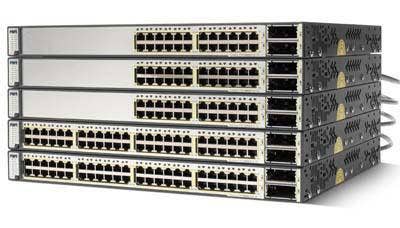
The In-Stat study rated similarly equipped Gigabit Ethernet fixed managed Layer 2 and Layer 3 switches -- both 24- and 48-port varieties -- to determine which performed the most efficiently based on fabric capacity (Gbps) per watt.
Here are how some of the top switch vendors ranked and how they responded.
Cisco Systems
Cisco Systems ranked dead last in the 48-port category with less than one half GBPS per watt and next to last in the 24-port category with similar numbers. But the San Jose, Calif.-based vendor said the study painted an inaccurate picture.
"We're not comparing apples to apples here," said Cisco director of access routing and switching Inbar Lasser-Raab of the study, pointing instead to a recent announcement by Miercom that it's launching its own form of green certification for networking switches and has named the Cisco Catalyst switching portfolio the first member of the green team.
Shown here is Cisco's Catalyst 3750-E
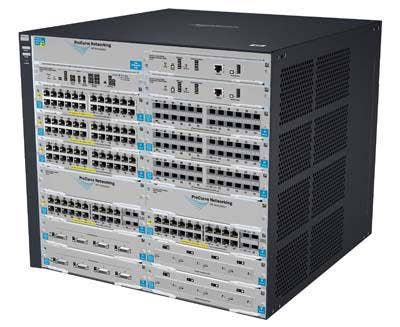
ProCurve Networking by HP also didn't fare too well in In-Stat's comparison, which indicated 24-port ProCurve switches offer roughly 0.60 Gbps per watt and its 48-port switches offer around 0.80 Gbps per watt. According to In-Stat, ProCurve ranked eleventh out of 13 vendors in the 24-port category and twelfth out of 13 for 48-port switches.
"It's great that people care about this, but the industry lacks a standardized way of measuring," ProCurve global director of sales and marketing Mark Thompson said, adding that In-Stat ranked vendors based on what they list on their data sheets, for which ProCurve quotes the worst-case power draw. Thompson said that a worst case scenario is often "very different than real life experience.
"There's a big difference between power when a switch is turned on and sitting there, than when there are several devices connected," he said.
Shown here is the ProCurve Switch 8212, a core switch the Palo Alto, Calif.-based vendor launched in October which ProCurve said fits into the vendor's overall green strategy.

3Com came out on top of In-Stat's study, being ranked by the research firm as the greenest of the green. In-Stat said 3Com's 24-port switches delivered roughly 3.25 Gbps per watt, when no other vendor reached 2.0 Gbps per watt. For 48-ports, 3Com delivered roughly 2.0 Gbps.
"Businesses worldwide are looking for effective ways to reduce energy use, both to save money and to conserve resources," said Scott Hilton, vice president of enterprise products for 3Com. "Through innovative design, 3Com's newest products use up to 78 percent less power than previous switches. It's gratifying that In-Stat recognizes 3Com's industry leadership in this important area."
Shown here is 3Com's 24-port 5500G switch.
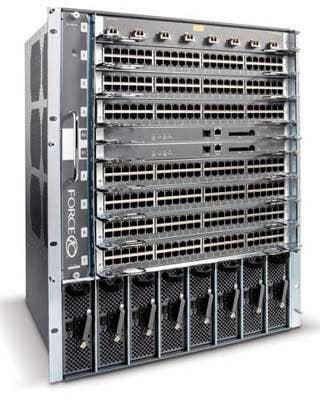
Force 10 also took exception with In-Stat's results, which ranked Force 10 ninth overall in the 24-port category with about 0.90 Gbps per watt. Force 10 ranked much better for 48-port switches, coming in second with the ability to deliver about 1.90 Gbps per watt.
"In general, Force10 believes that the concept of green networking equipment is a bit misleading," said Stephen Garrison, vice president of marketing. "Networking equipment requires power and as new features are added, such as PoE, or system density increases, even more power is needed. What Force10 aims to do is to provide the tools that can help customers optimize their power needs for their unique requirements. We do this at the system architecture level with unique management features as well at the design level."
Pictured here is Force 10's C300, an eight-slot chassis that features an advanced power management system that allows customers to optimize power needs on a per port basis. Rather than delivering 15.4W of power to every port on a single PoE-enabled line card, users can specify power to each port, reducing consumption and optimizing available power in the wiring closet. The C300 also features a passive copper backplane, further reducing power required to run the switch, Garrison said.
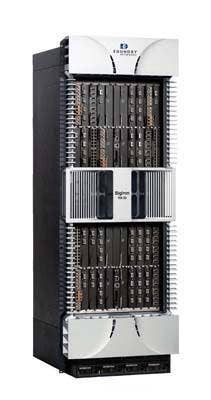
Foundry Networks, which has recently prided itself on being green, even taking home the Green Award at Interop Las Vegas 2008, couldn't keep up with the pack in In-Stat's study, hitting near the bottom of the heap at about 1.10 Gbps per watt for its 48-port switches and coming in last for 24-port switches with about 0.40 Gbps per watt. The results put Foundry on the defensive.
"Note that non-enterprise class products and enterprise/service provider grade products are compared equally here," said a Foundry spokesman. "SOHO and small business switches are inherently going to use less power; they perform less function, less performance, less reliability, etc. It is like comparing a Formula One car to a Prius."
Pictured here is the 32-slot chassis on the BigIron RX switch, which Foundry said offers compelling green and TCO advantages.
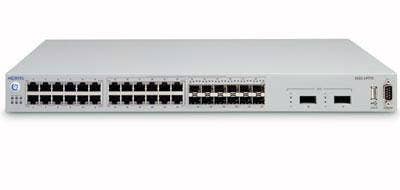
Nortel is also hammering home its green initiatives, this week launching a full-fledged ad campaign promoting its greenness and claiming that when it comes to power consumption Nortel solutions are more affordable than Cisco's. And while Nortel managed to beat out Cisco in In-Stat's green switching study, it wasn't enough for the Toronto-based vendor to crack the top of the list. In-Stat said Nortel's 24-port switches offered a hair over 0.50 Gbps per watt and 48-port switches offered about 1.4 Gbps per watt.
Jake Power, Nortel's marketing director for converged networks said In-Stat's report was not based on real-world tests and amounts to an "apples to oranges" comparison. He added that a number of the products rated by In-Stat run the gamut between enterprise, SMB and home networking switches and true comparisons cannot be made.
"It's purely a data sheet analysis. That's not a real comparison," he said. "Someone needs to test like for like. It's not like we'd ever come up against D-Link in a bid."
Pictured here is Nortel's Ethernet Routing Switch 5530-24TFD, a next-generation stackable 10/100/1000/10000 Mbps Ethernet Layer 3 routing switch designed for high-density Gigabit desktop connectivity and Gigabit and 10 Gigabit fiber connectivity for aggregation for mid-size and large enterprise wiring closets.

H3C, like its 3Com division, also ranked well according to In-Stat, with its 24-port switches ranking fourth overall with about 1.60 Gbps per watt and its 48-port ranking seventh with about 1.40 Gbps per watt. Shown here is the H3C 48-port Switch 5600 with PoE, which is comparable to 3Com's Switch 5500G.

For Netgear, which mostly serves the SMB segment, In-Stat's rankings didn't come as much of a surprise. Netgear ranked third in both the 24-port and 48-port categories delivering about 1.75 Gbps per watt in each category.
Pictured here is the GS748T, a 48-port switch that has been awarded the Miercom Green Award based on low power consumption. Part of Netgear's family of Smart Switches, the switch offers 10/100/1000 Mbps ports, each capable of powering 2000 Mbps of data throughput in full-duplex mode, plus four optional fiber ports, it provides a 96 Gbps backbone.
"Netgear is committed to providing customers with high quality products that are environmentally sound and to conducting our operations in an environmentally responsible manner," a Netgear spokesman said.
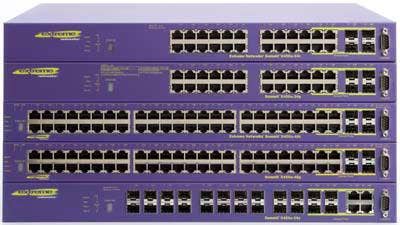
Extreme Networks came in fourth for 48 ports in In-Stat's study offering about 1.65 Gbps per watt and eighth when it came to 24 ports with 1 Gbps per watt. While that ranked high compared to several other vendors, an Extreme spokesman said "the recent comparison report from In-Stat is based on data sheet specs … These cannot be accurately used to compare power consumption for many reasons.
First, the figures from data sheets may be conservative figures that are based on worst case scenarios for the given switch -- like ours are -- and often will show power consumed that is above the average power during typical operation. Also, data sheet numbers cannot construct an even playing ground for such a vendor comparison. In-Stat never contacted us in the process of that comparison. The bottom line is that independent testing is the only way to achieve an accurate ranking of what different switches consume."
Shown here is Extreme's SummitX450a switch family, which features both 24- and 48-port models.
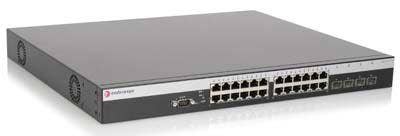
According to In-Stat's report, Enterasys switches can deliver about 1.35 Gbps per watt in the 24-port variety and just a bit less with 48 ports, putting them sixth and eighth overall, respectively. But according to Enterasys, green doesn't live or die with just the switch.
"At our recent customer council meeting, our customers shared that while 'Green IT' appeals to the environmental emotions, the more tangible benefit is immediate savings on the monthly utility costs," an Enterasys spokesman said. "While green is a fantastic product benefit, they did not see it as a primary purchase criteria. Price, performance, reliability, security and other features were seen as the primary vendor selection criteria, which that vendor selection could subsequently be further reinforced and justified if that vendor also had green products."
Shown here is Enterasys' SecureStack B3 switch, which Enterasys said is designed for power efficiency. The vendor also recently released the new D-Series switch which reduces power consumption by not turning the fan on until the room temperature reaches 100 degrees.